6 Rare Cat Breeds You May Not Know About
These cats are truly special.
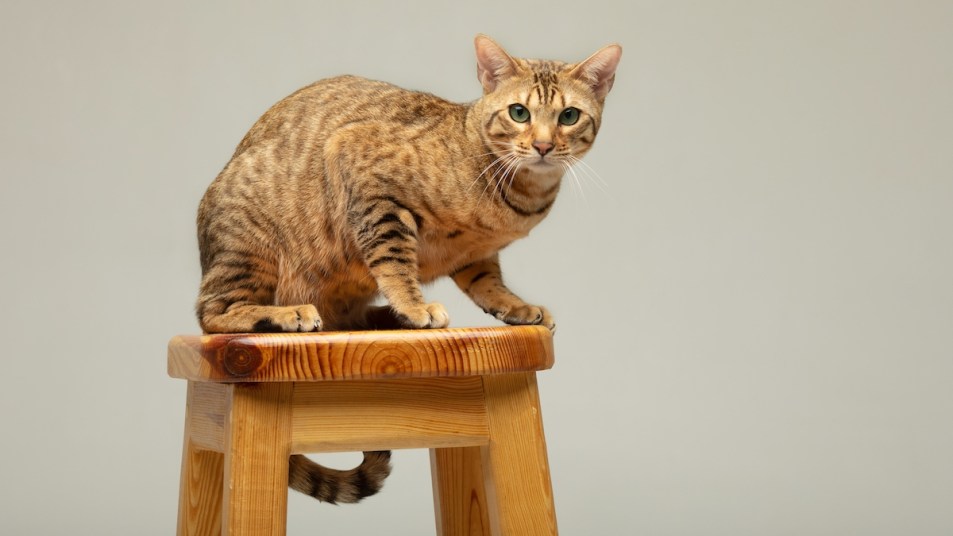
I like dogs. I like horses. I even like guinea pigs. But I love, love, love cats. There’s something so charming about their aloofness and self-sufficiency. Even their disdain is adorable. Like me, they often wish to be left to their own devices. For me, that’s reading; for them it’s jumping in and out of a cardboard box. We both, however, like taking naps in the sun.
Compared to most dogs, cats are low-maintenance pets that can be counted on for cuddles when you need them. They’re also just plain pretty. Burmese cats and Persian cats, LaPerms and Peterbalds, Burmilla cats and British Shorthairs; there’s such a variety of beautiful cat breeds that I often find myself wishing I could adopt them all. (My 13-year-old tabby wouldn’t take well to this idea.) Whether you’re a fellow cat lover who’s thinking about adopting a new furry companion, or you just want to know more about all of the beautiful and rare cat breeds that exist, keep reading. Below is information on six of the rarest cat breeds in the world.
1. Kurilian Bobtail
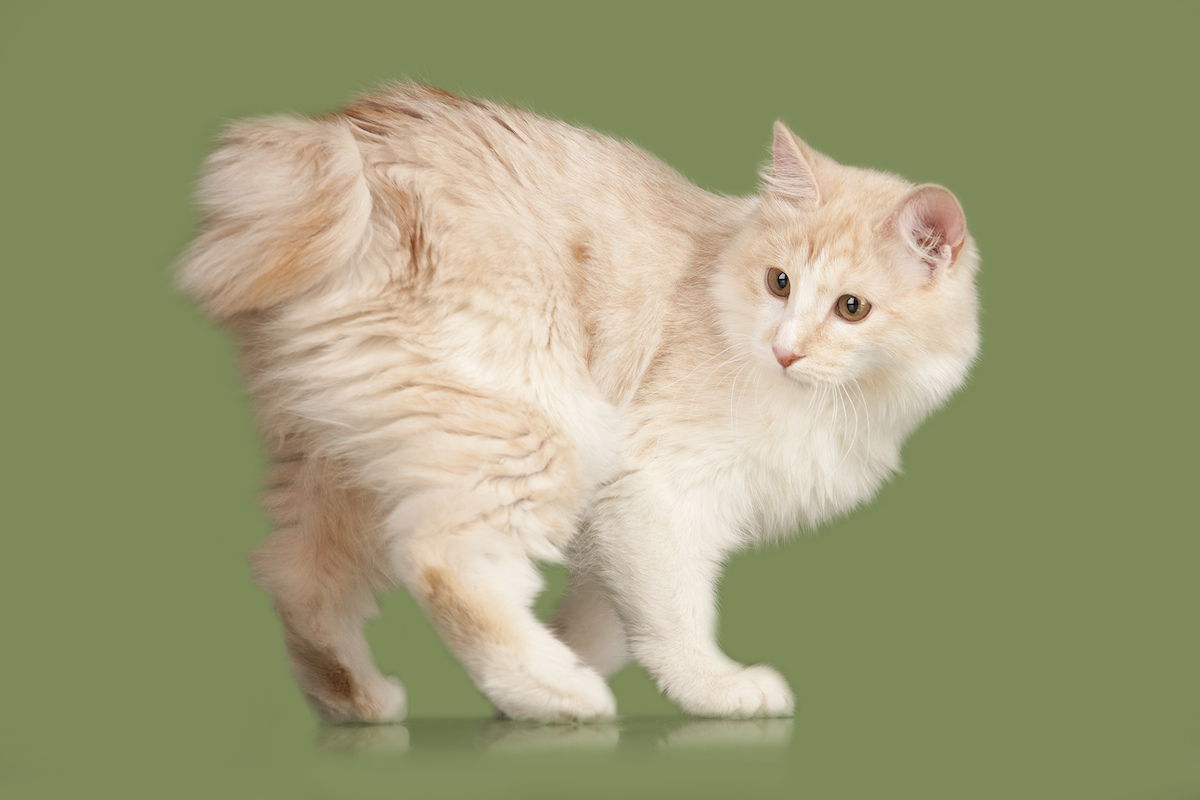
You might have heard about the American Bobtail, but do you know about its eastern European counterpart? If you like cats that have a bit of a wild streak, the Kurilian Bobtail cat might be for you. This stub-tailed breed of cat gets its name from the Kuril Islands of Russia, which is where it originated. Their excellent ability to sniff out and catch mice makes them popular house cats in Russia, but there may be less than 100 of them in the United States, according to the International Cat Association.
Despite their brawny build and sleek white-and-gray appearance (which makes them resemble little snow leopards), Kurilian Bobtails are very gentle and friendly cats. They’re highly inquisitive by nature and can often be found on the highest perch in the room, surveying their surroundings. Their most charming feature, however, is their little pom-pom-shaped tail (hence the name Kurilian Bobtails). Every Kurilian’s tail is slightly different: there are spirals, whisk-shapes, and tails bent at funny angles, with anywhere from two to 10 vertebrae. These funny tail shapes, combined with their luxurious thick coats, make Kurilians one of the world’s most beautiful cats. If you’re in search of a unique new breed to love, look no further.
2. Norwegian Forest Cat
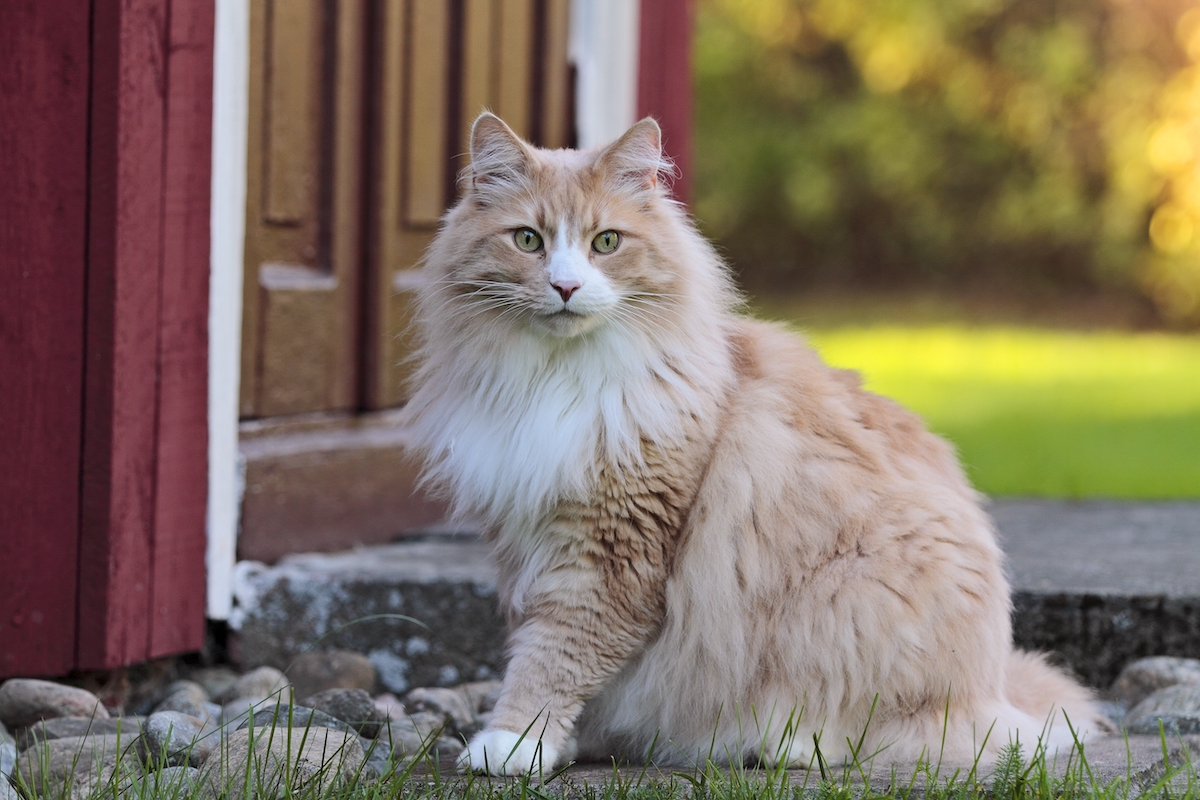
An exotic name for an exotic cat! While this may be a rare breed to us, this intelligent cat is fairly popular in its homeland. Originally from Scandinavia, these cats remain immensely popular in their homeland of Norway, although they’ve proliferated throughout Europe and have a small presence in the United States. Norwegian Forest Cats are best known for their waterproof double coats, which, pre-domestication, helped them survive the tough Scandinavian winters. These coats bear a striking resemblance to other semi-longhaired cats, such as the Maine Coon. Still, you can always tell these kitties apart by their large, almond-shaped eyes and symmetrical triangle-shaped heads, according to the Cat Fanciers’ Association (CFA).
Norwegian Forest Cats are frequently homebodies and often described as independent and affectionate on their own terms. They’ll ask for attention when they want it and typically like to be left alone otherwise. As relatively active cats, they enjoy using cat trees and scratching posts — good luck keeping your couch safe from their claws — and often get the zoomies before long periods of relaxation. Like tabbies and shorthairs, these fluffy felines make for great house cats. Just know that they aren’t low-maintenance when it comes to shedding — you’ll want to invest in a quality vacuum along with your new kitty!
3. Egyptian Mau
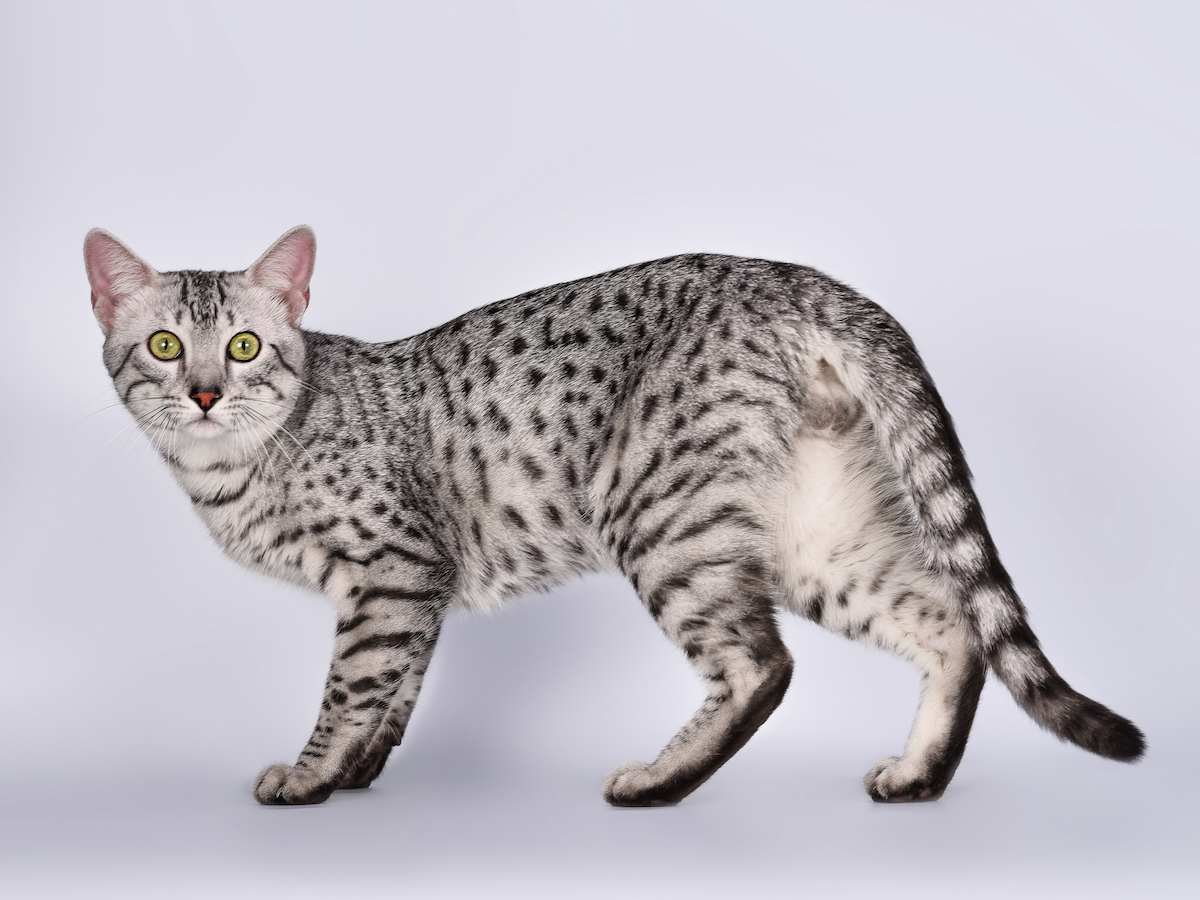
Of the many exotic rare cat breeds in the world, the Egyptian Mau is one of the best-loved. According to the CFA, they’re one of the only domestic cat breeds with naturally occurring spots, which show in silver, bronze, smoke, or black color patterns. They look like mini leopards and walk with a cheetah-like grace. Spend enough time with a Mau, and the reason the Ancient Egyptians worshiped them will be clear.
The Egyptian Mau has been around since the building of the pyramids, making them one of the oldest cat breeds. Known for their high emotional intelligence, Egyptian Maus are attuned to the moods of their household, and they’re good at communicating with their owners. Don’t disregard these cats: Their deep stare will make you wonder if there really is an ancient deity walking around your home.
4. Serengeti
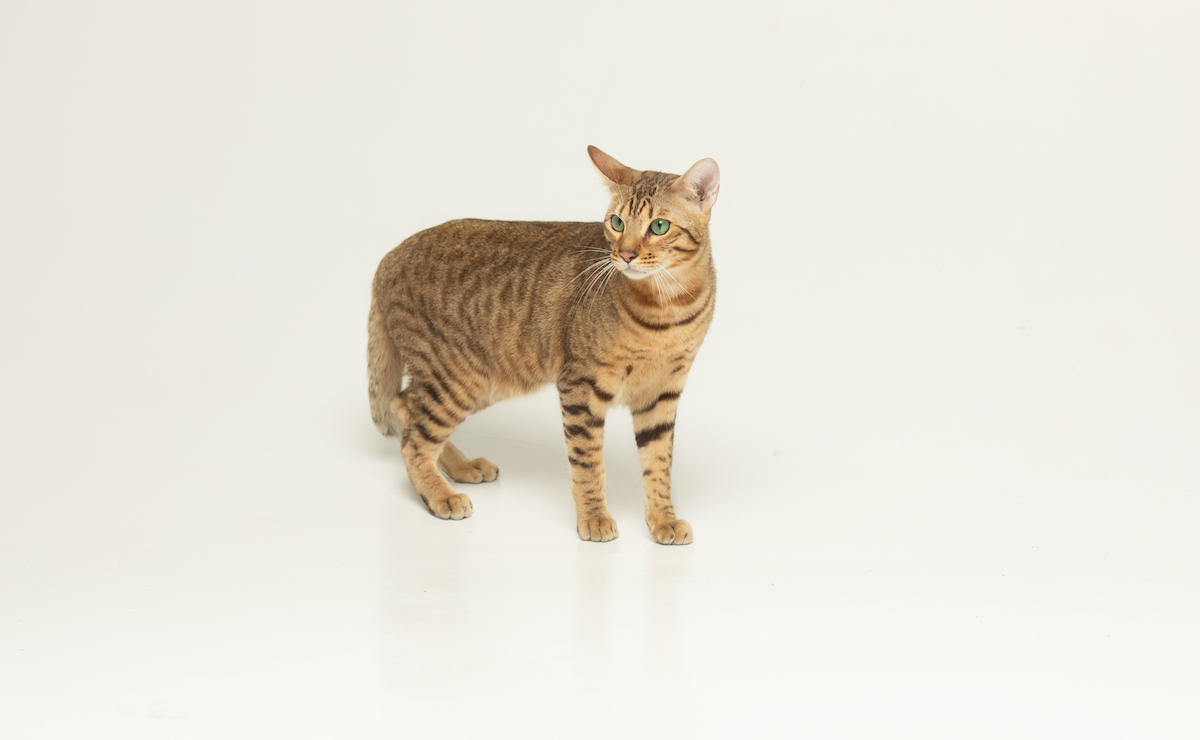
Although they share a regal, exotic appearance, the Serengeti and Egyptian Mau are very different. While the Mau has been around for centuries, the Serengeti is a newer breed, created in 1995 by crossing an Oriental Shorthair with a Bengal. They bear a striking resemblance to Servals, which is often accentuated by their upright posture and athleticism. Because of this, Serengetis are a great choice for cat owners who want the look and feel of an exotic pet without the accompanying cost and maintenance. Serengetis are typically friendly and curious cats, although they may be a little shy at first. They’re highly agile and love to perch on a friendly shoulder or the fridge. While they do well as house cats, they thrive in homes with plenty of stimulation: toys, cat trees, and scratching posts are all a good investment for these active animals.
5. Korat
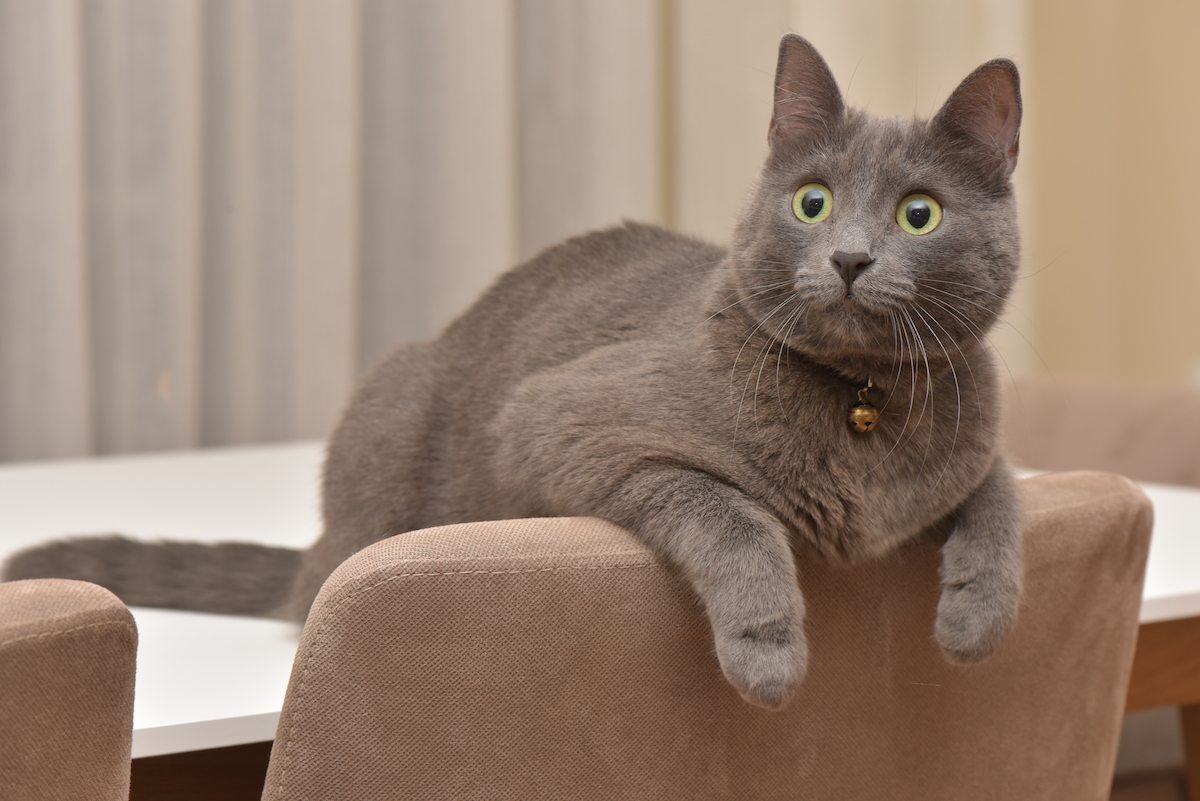
A ban making it illegal to breed these cats outside of their native Thailand has made Korat cats one of the rarest cat breeds in the world. PetMD speculates that the breeding and distribution of these beautiful felines is quietly limited so as to make them a signifier of the upper class. While the truth of this claim is uncertain, there’s no doubt about the difficulty of finding a Korat in the United States. Korats are silver-blue in coloration, with no other markings, and the silver tips of their fur give them a stunning luminescent quality. Known for being highly social and affectionate, they love playing, cuddling, and generally being the center of attention. Korats make great family cats and also usually get along with other pets. If you ever stumble across one of these rare cat breeds in a shelter or foster home, know that you’re experiencing a rare moment – and one you likely won’t get again.
6. Sokoke
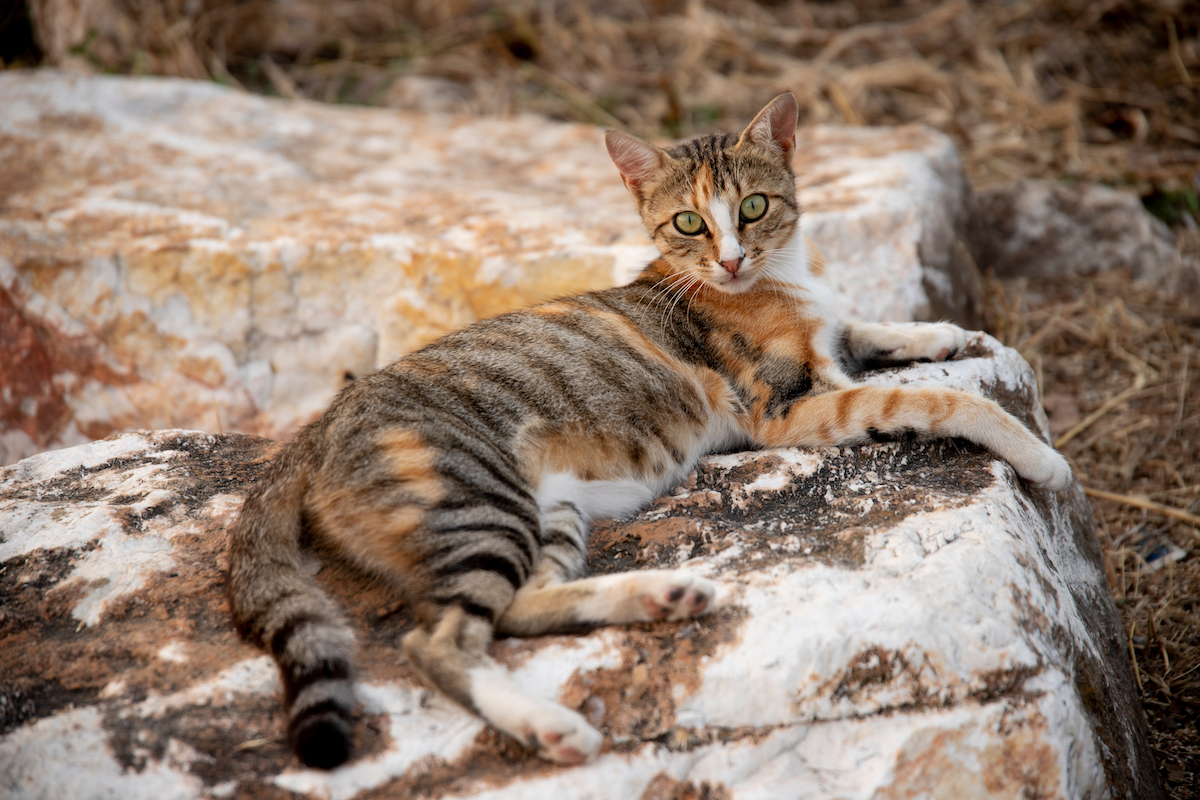
So what is the rarest domesticated cat in the world? The Sokoke. Sokokes are native to a small coastal area of Kenya, although their ancestry extends back to Asian cats, which themselves evolved from wild cats in the Arabic peninsula. In other words: They have a long and regal lineage. Sokokes can be identified by their unique camouflaged tabby pattern, long and graceful legs, and large, upright ears. They have an elegant tip-toe style of walking which becomes especially noticeable when they’re excited (which is frequent). These playful animals thrive in homes with multiple people or other animals, and in homes where they have access to the outdoors. (They have seemingly limitless energy that must be expended.) It’s unlikely you’ll ever run into a Sokoke. They aren’t called the rarest cats in the world for nothing.
Honorable Mentions
Although these beautiful creatures are amongst the rarest cat breeds in the US, there are additional options to consider.
- The Bombay (a mixture of Burmese and American Shorthair breeds)
- The American Wirehair, a New York native
- The Devon Rex, Devonshire England’s “Alien Cat”
- The Cornish Rex (born from a genetic mutation)
- The Tonkinese Cat (a mixture of the Burmese and Siamese cats)
- The Turkish Angora (from Turkey, of course)
- The Long-Haired Turkish Van
- The Minskin (a combo of the hairless Sphynx and short-leg Munchkin)
Which cat is right for me?
If you’re adopting one of these rare cat breeds, there are a few factors to consider. First, make sure you choose a cat with the right disposition for your home environment. Do you live in a busy home with multiple people or other pets? Or is your home life quieter? Are you going to be around to give your animal plenty of attention, or would a more solitary cat be a better fit? Also, consider things like your budget: Shopping for specific rare cat breeds can be expensive. You may also want to explore cat rescue. Many shelters need adoptive cat parents, and it’s a very rewarding experience. Whichever path you take, what’s important is that you choose the right cat for you – and that they have the loving home they deserve.












